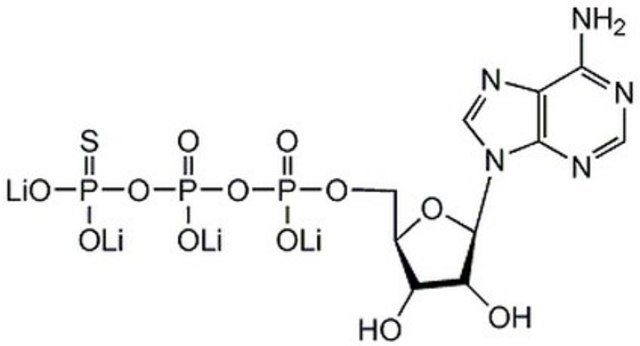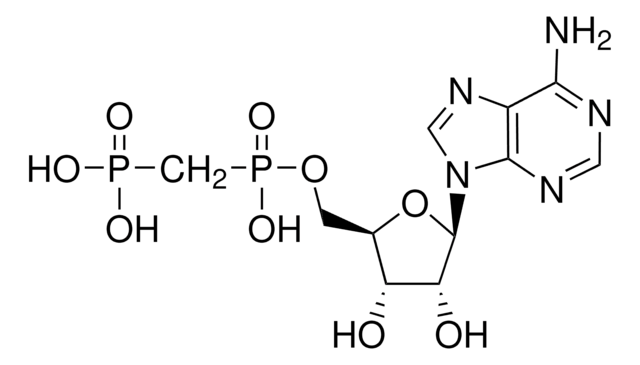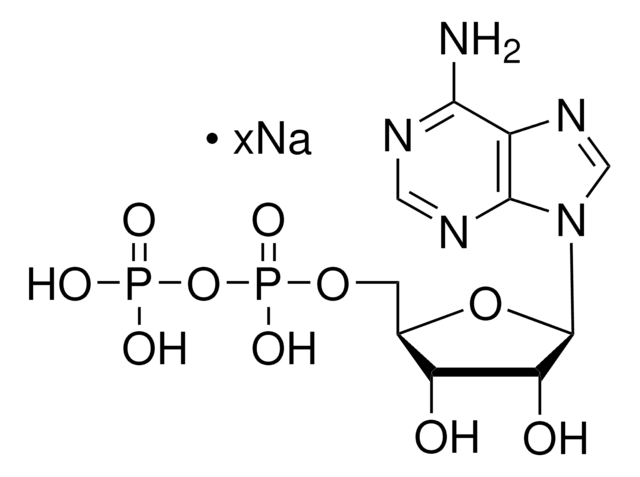119120
Adenosine 5′-O-(3-Thiotriphosphate), Tetralithium Salt
A relatively stable, slowly hydrolyzable ATP analog that can substitute for ATP in various kinase reactions. Used as a substrate and as an inhibitor of ATP-dependent enzyme systems.
Synonym(s):
Adenosine 5′-O-(3-Thiotriphosphate), Tetralithium Salt, ATP-γ-S, 4Li
About This Item
Recommended Products
Quality Level
Assay
≥85% (HPLC)
form
solid
manufacturer/tradename
Calbiochem®
storage condition
OK to freeze
desiccated (hygroscopic)
impurities
<10% ADP
color
white
solubility
water: 10 mg/mL
shipped in
wet ice
storage temp.
−20°C
SMILES string
[Li+].[Li+].[Li+].[Li+].[P](=O)([S-])([O-])O[P](=O)([O-])O[P](=O)([O-])OC[C@H]1O[C@H]([C@@H]([C@@H]1O)O)[n]2c3ncnc(c3nc2)N
InChI
1S/C10H16N5O12P3S.4Li/c11-8-5-9(13-2-12-8)15(3-14-5)10-7(17)6(16)4(25-10)1-24-28(18,19)26-29(20,21)27-30(22,23)31;;;;/h2-4,6-7,10,16-17H,1H2,(H,18,19)(H,20,21)(H2,11,12,13)(H2,22,23,31);;;;/q;4*+1/p-4/t4-,6-,7-,10-;;;;/m1..../s1
InChI key
DWQFDOIBOYDYKH-KWIZKVQNSA-J
General description
Application
- Involvement of purinergic receptors and NOD-like receptor-family protein 3-inflammasome pathway in the adenosine triphosphate-induced cytokine release from macrophages.: This study explores the role of purinergic receptors and the NOD-like receptor-family protein 3 (NLRP3) inflammasome pathway in cytokine release induced by adenosine triphosphate (ATP) in macrophages. The findings suggest potential therapeutic targets for inflammatory diseases (Gicquel et al., 2014).
- Extracellular ATP facilitates flow-induced vasodilatation in rat small mesenteric arteries.: The study demonstrates that extracellular ATP enhances flow-induced vasodilation in small mesenteric arteries in rats, indicating a significant role of ATP in vascular function and potential implications for cardiovascular therapies (Liu et al., 2004).
Warning
Reconstitution
Other Notes
Chung, S., et al. 1991. Science253, 560.
Litosch, I., and Fain, J.N. 1986. Life Sci. 39, 187.
Chrysogelos, S., et al. 1983. J. Biol. Chem.258, 12624.
Legal Information
Storage Class Code
11 - Combustible Solids
WGK
WGK 3
Flash Point(F)
Not applicable
Flash Point(C)
Not applicable
Certificates of Analysis (COA)
Search for Certificates of Analysis (COA) by entering the products Lot/Batch Number. Lot and Batch Numbers can be found on a product’s label following the words ‘Lot’ or ‘Batch’.
Already Own This Product?
Find documentation for the products that you have recently purchased in the Document Library.
Our team of scientists has experience in all areas of research including Life Science, Material Science, Chemical Synthesis, Chromatography, Analytical and many others.
Contact Technical Service![Adenosine 5′-[γ-thio]triphosphate tetralithium salt ≥75% (HPLC), powder](/deepweb/assets/sigmaaldrich/product/structures/319/398/e29221c2-3649-455b-bd33-583bb017ec7d/640/e29221c2-3649-455b-bd33-583bb017ec7d.png)
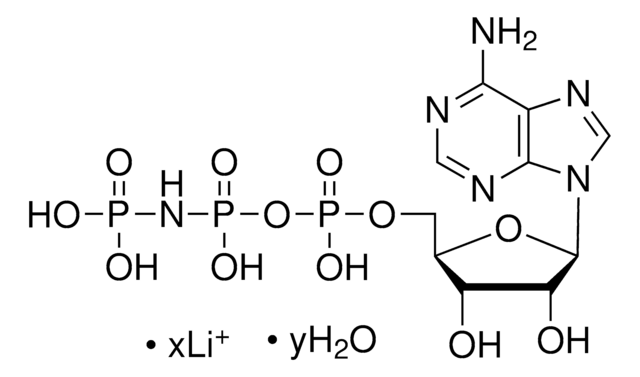

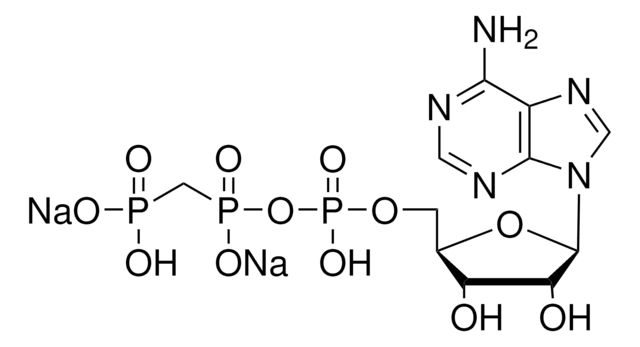
![Adenosine 5′-[β-thio]diphosphate trilithium salt ≥80% (HPLC)](/deepweb/assets/sigmaaldrich/product/structures/666/651/b097613c-0d79-4acf-9a09-a0a42234d7bd/640/b097613c-0d79-4acf-9a09-a0a42234d7bd.png)
